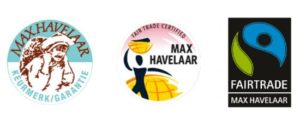



“Onward transit of FER-1327 from Codecano arrived Cube Microplex 2007-07-25 kate rich 20/6/07”
Shipment pallet delivered by forklift, boxes were all present but many were opened and the coffee bags looked rummaged. Forklifters kindly reweighed the shipment (252 kg) and recorded the pickup as damaged. Drive home was gloomy yet aromatic. Arrived Cube at midnight, unloaded 1/4 metric tonne coffee into the under-auditorium-seating area. Coop had miscompiled the order as 175kg ground coffee and 75kg beans, the reverse of my emailed order; the ground coffee was also ground too coarse. Emailed Ricardo shipping report then went home to sleep.[1]
As food is seldom consumed when and where it was found, it needs wrapping into other materials before it can travel. Bulk ingredients packaged in batches move across long distances; they are stacked, stored, sorted and sold. Packaging is the result of an uneasy compromise between people and their machines, negotiating industrial wants with the more convoluted desires of individual customers, so that products roll off a food grade conveyor belt as smoothly as they fit into a biodegradable shopping bag or a kitchen cupboard. But besides physical protection, packaging offers a convenient surface on which to project messages about the product or even about the package itself. Food labelling is a means of communication between the many parties involved in the way food gets around; each of them leaving traces that represent their own interest in what is or what is not inside.
When a new product is added to Kate Rich’s Feral Trade product range, packaging is a factor to be reckoned with. As the goods are mainly passed by hand, size matters, for example, in relation to the volume that is allowed as carry-on luggage. In addition, its container needs to be tough enough to resist the unpredictable conditions that might occur on non-freight routes. But above all Feral Trade products, as well as their packaging, make the experience of trading tangible.
It’s 1986. In a conference centre in the Netherlands, shopkeepers of various local Fairtrade shops gather for a long meeting.[2] The single item on the agenda is a proposal to launch a new brand, Max Havelaar, named after a bestselling 19th century novel about the exploitation of Javanese coffee plantation workers by Dutch colonial merchants. Solidaridad, the country’s largest importer of Fairtrade coffee and initiator of the brand, is under pressure from Mexican coffee growers who demand access to a larger market than the autonomously and rather amateurishly run shops will ever be able to provide. The shopkeepers present at the meeting respond with mixed feelings, voicing their predictable worries about the risk of brushing with mainstream retail, and wondering how this brand will be able to increase sales and still guarantee the fairness of the trade.
The main anxiety though, is that once the coffee is sold in supermarkets, it will be hard to communicate the complex story of provenance that comes with it. Outside the narrative context they have carefully built in their small-scale, volunteer-run spaces, the packaging will be too tight a space to make up for the loss. By the end of the day, the argument for market expansion is more convincing. Solidaridad settles for a logo with a hand drawn portrait of a Mexican farmer carrying a bag of raw coffee beans. More than 20 years later, after an indecisive interlude, the brand is redesigned by a London agency[3] in an attempt to rationalise packaging and streamline marketing.

Again, after much discussion, the Max Havelaar foundation chooses a human figure but this time it is depicted in the form of an abstract swoosh representing both producer and consumer.
Feral Trade promotes its coffee proudly as ‘non-certified organic’, a community guaranteed label that is established through shifting social processes instead of relying on external quality assurance. Keeping with the same ethos of undefined definition, the hybrid philosophy behind the design for the packaging of Montenegrin Delight fits with the variable graphic styles of the Feral Trade product range: “The original owner of the company designed the box art himself on his home computer to connect tradition with modernity.”[4] Without a consistent brand identity, another layer of information is added to the many types of messages that are already conveyed by the diverse packages in the Feral Trade range. Sometimes attached as a label, often available through the Feral Trade website, customers can find a detailed breakdown of costs and also a full track record of each shipment. The information is retrieved from a custom made database in which Feral Trade shipping agents offload e-mails, reports, faxes and freight documents gathered along the way. Making the bureaucratic nightmares of international cargo legible, customers are offered a form of transparency that is not necessarily reassuring. In a parody on EU-regulated nutrition labelling, the supplied information here produces an active position, where unexpected events and, sometimes, undesirable results are to be taken into account.
To bring up the debate about Fairtrade labelling in the context of the Feral Trade project is, to say the least, a little uncomfortable. But even if their respective scales, aims and ideas are of a different nature, such a comparison might help to understand how to reveal complicated stories of origin and destination, without falling into the trap of pairing authenticity with reliability. Feral Trade’s unpredictable appearance offers an occasion to come into contact, proposing both a recording and a constitution of social networks. The precision of its design is in the persistent choice for the kind of leaky containment that allows narratives of trade to permeate through.